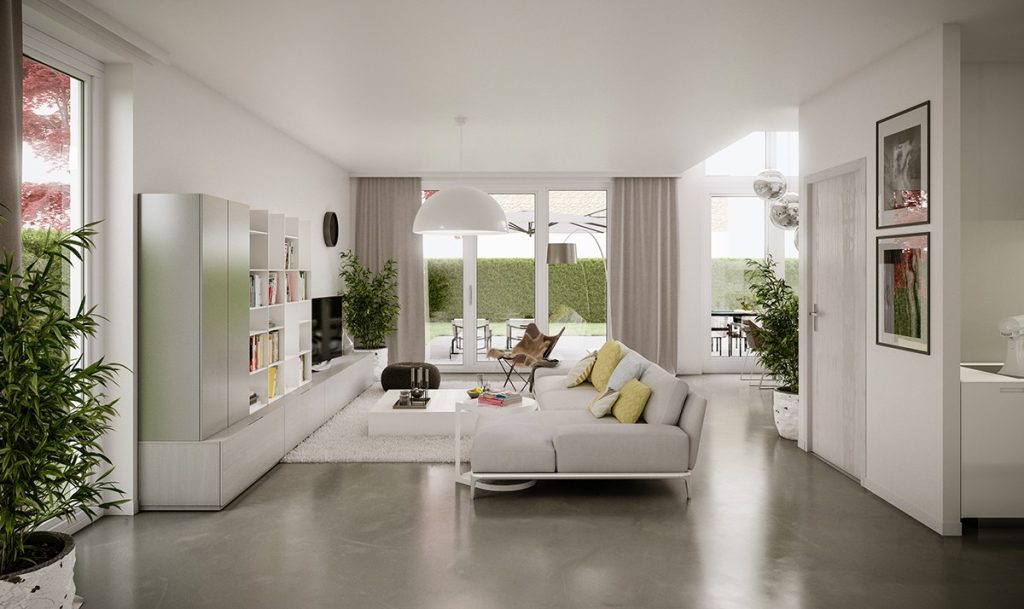Incorporating innovative technology into homes has become a pivotal aspect of modern living, revolutionizing our daily routines. Homeowners can now control lighting, temperature, security systems, and even appliances through smartphones or voice-activated devices, making their lives more convenient. This technological advancement streamlines home management and enhances energy efficiency, contributing to environmental sustainability. Imagine being able to adjust your home’s thermostat while you’re at work to save energy or turn on the lights before you even step inside.
Sustainable Materials
Eco-friendly and sustainable materials are central to modern home design trends. Homeowners increasingly opt for renewable resources such as bamboo, recycled metal, and reclaimed wood to reduce their environmental impact. These materials contribute to energy efficiency and enhance the aesthetic appeal of homes. Incorporating sustainability into design choices reflects growing ecological consciousness. If you’re considering an eco-friendly home, exploring homes for sale in Belmont could provide great options that align with these values.
Open-Concept Layouts
Open-concept layouts remain a favorite among many homeowners and designers. This design trend allows for free-flowing spaces, making homes feel more extensive and more connected. Homeowners can make their space more livable and practical by removing unneeded walls. Open-concept layouts are advantageous for socializing and entertaining guests, as they allow seamless transitions between the kitchen, dining, and living areas. According to the National Association of Home Builders, open floor plans have been one of the top design trends for new homes. They also provide flexibility in furniture arrangement and make achieving a cohesive aesthetic throughout the living space easier.
Outdoor Living Spaces
Maximizing outdoor living spaces is another significant trend in modern home design. Homeowners invest in patios, decks, and gardens to extend their living areas. These spaces are perfect for entertaining, dining al fresco, or relaxing in the open air because they blend the indoor and outdoor spaces. An outdoor living area can include fire pits, outdoor kitchens, comfortable seating, and lighting to create a cozy and functional space. With the increasing emphasis on outdoor activities and home-based leisure, creating a well-designed outdoor space can significantly enhance the overall living experience.
Minimalist Aesthetics
Designing with minimalism, which emphasizes clean lines and uncluttered spaces, remains stylish. This trend promotes a serene and orderly environment, focusing on the essentials and avoiding excess. The simplicity and functionality of minimalist design appeal to many homeowners who seek a peaceful retreat from the chaos of everyday life. By reducing visual noise and eliminating unnecessary items, minimalism helps create a calming atmosphere and improves mental clarity. Minimalist design elements often include neutral color palettes, natural materials, and carefully selected furniture and decor items that serve function and form.
Multifunctional Furniture
Multifunctional furniture, such as sofa beds and expandable dining tables, is becoming increasingly popular due to homes’ growing versatility. These pieces allow homeowners to maximize space without compromising style, especially in smaller houses or apartments. For instance, a built-in coffee table can assist in keeping the living room tidy, and a couch bed can double as a guest bed at night or as a daytime seating alternative. This adaptability improves living conditions by making dwellings more habitable and efficient.
Biophilic Design
A current trend in interior decor involves biophilic design, which incorporates natural elements into indoor spaces to create a calming atmosphere. This approach utilizes natural materials, indoor plants, and nature-inspired decor to reduce stress, improve air quality, and enhance mental and physical health. Beyond merely a fad, biophilic design is an ideology that values nature’s inherent worth in our existence. Key elements include large windows, indoor water features, and natural colors and textures, collectively creating a harmonious living environment that nurtures both the body and soul.
Wellness-Focused Design
Designing homes with wellness in mind is a rising trend that emphasizes creating a healthy and nurturing environment. Homeowners are incorporating features such as air purifiers, water filtration systems, and natural lighting to enhance the overall well-being of the inhabitants. Additionally, wellness-focused design often includes spaces dedicated to physical activity, such as home gyms or yoga studios and areas for mindfulness and meditation. By prioritizing wellness in home design, homeowners can create a sanctuary that supports their physical, mental, and emotional health.
